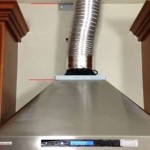Interior paint is one of the most common home improvement projects that homeowners take on. Whether you’re painting an entire room or just touching up a few spots, understanding how much paint you need is essential for planning your project and budget. One of the most important factors to consider is the coverage rate of the paint. Knowing the coverage per gallon of your chosen paint will help you estimate how much you need to complete the job.
Types of Interior Paint
When selecting paint for your project, you’ll find there are many different types of interior paints to choose from. Each type of paint is formulated to provide different benefits and will have different coverage rates. The most common types of interior paints are latex, oil-based, and alkyd paints. Latex is the most popular type of paint and is most often used for walls and ceilings. Oil-based paints are best for trim, doors, and cabinets, while alkyd paints are better for high-traffic areas such as kitchens, bathrooms, and hallways.
Factors Affecting Coverage Per Gallon
The coverage rate of interior paint will vary depending on the type of paint you use, the brand, the color, and the surface you are painting. For example, a light-colored paint will typically have a higher coverage rate than a dark color. Similarly, a flat finish will usually have a lower coverage rate than a glossy finish. The brand of paint you select also has an impact on coverage rate. Generally, higher-end paints will have higher coverage rates than lower-end paints.
Calculating Coverage Per Gallon
To calculate the coverage rate of a particular paint, you’ll need to know the square footage of the area you are painting. Divide the square footage by the number of gallons of paint you plan to use and the result is the coverage rate per gallon. For example, if you are painting a room that is 200 square feet and you plan to use two gallons of paint, the coverage rate would be 100 square feet per gallon.
Tips for Maximizing Coverage
To maximize coverage when painting with interior paint, there are a few tips you can follow. First, make sure to use the correct type of paint for your project. Latex paints typically have the highest coverage rates, while oil-based paints are generally lower. Also, choose a high-end paint when possible as they tend to have higher coverage rates. Finally, be sure to properly prepare the surface before painting. This includes cleaning, sanding, and priming, if necessary. All of these steps will help ensure the best coverage possible.

:max_bytes(150000):strip_icc()/ScreenShot2020-03-31at12.46.48PM-ea2c5577e27641b4a4a7c784fe9816a1.jpg)












Related Posts









